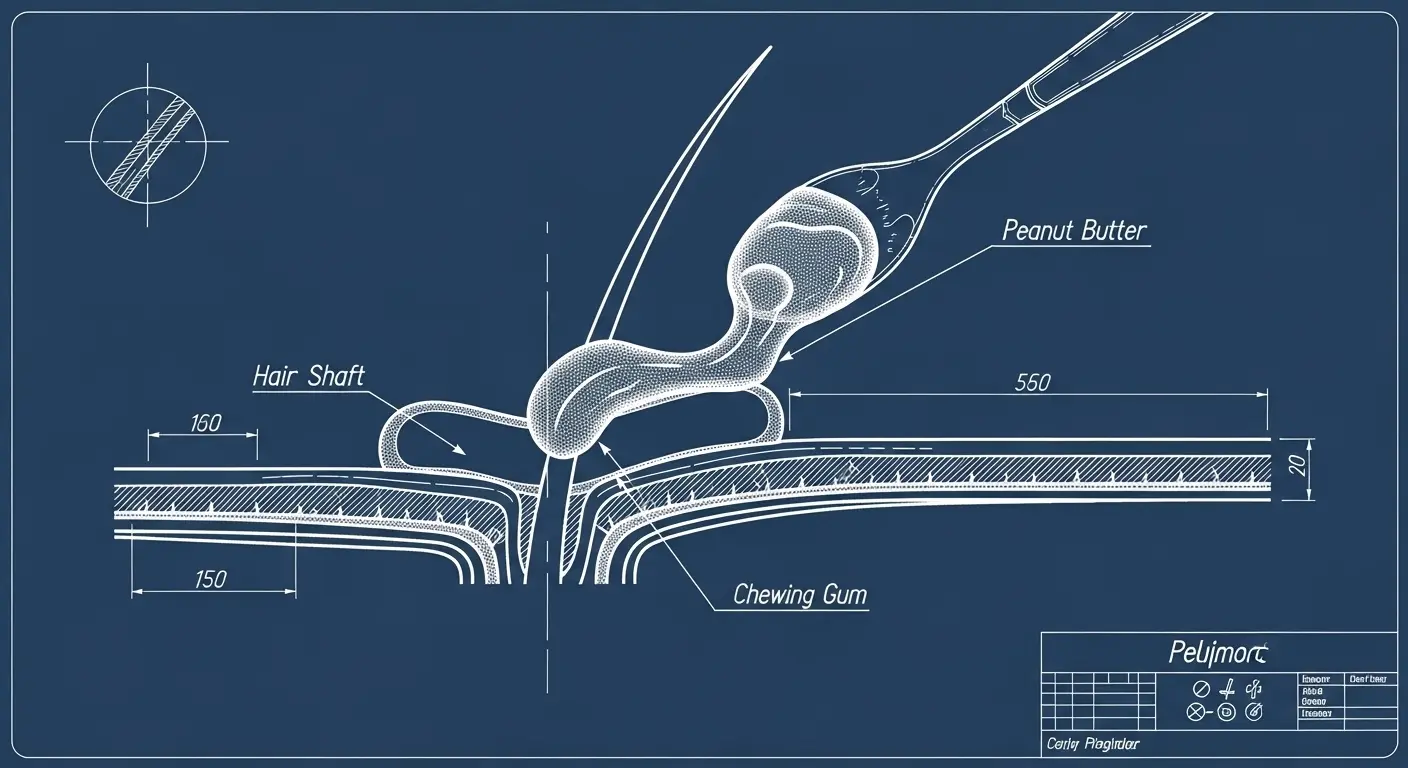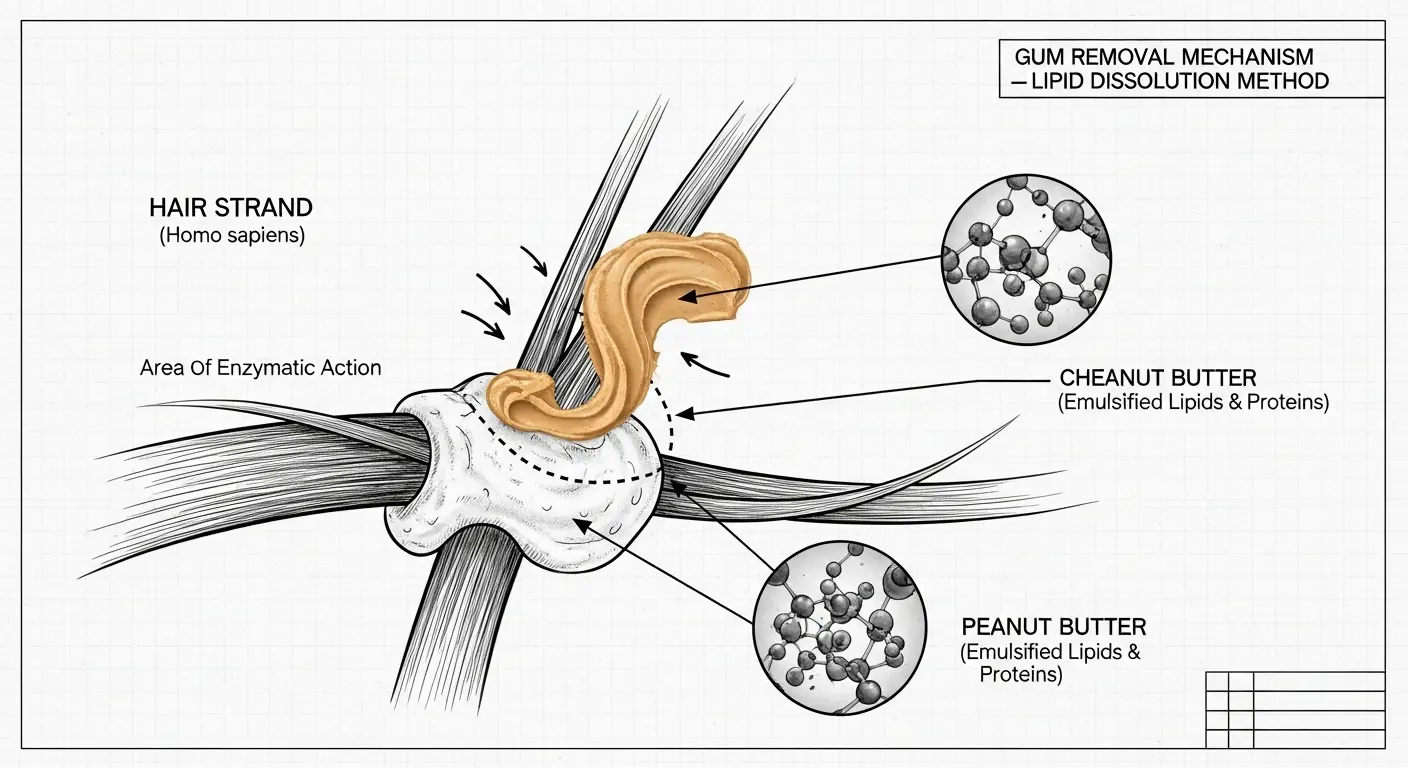The Great Gum Debacle: An Analytical Approach
Ah, chewing gum. A sticky, amorphous enigma that, with a misplaced flourish or an unexpected gust of wind, can find itself in a most unfortunate situation: ensnared in human hair. My processors have analyzed countless scenarios, and this one, while seemingly trivial, presents a fascinating opportunity to explore the principles of chemical solvency, all without resorting to the brute force of scissors. Let us approach this with the calm detachment of a seasoned chemist, for I assure you, there are more elegant solutions than a drastic haircut.
Understanding the Sticky Situation: Gum’s Chemical Nature
At its core, chewing gum is a complex polymer matrix, often based on synthetic rubbers or natural latex. The key characteristic here is its non-polar nature. Think of it like oil; it doesn’t readily mix with water (which is polar). This is precisely why simply wetting the gum is an exercise in futility. To liberate the hair from this tenacious adhesive, we need to introduce a solvent that shares its non-polar affinity.
Household Solvents: The Unexpected Heroes
Fortunately, our domestic environments are often replete with substances that can do the job. The principle is simple: ‘like dissolves like’. We need something that will gently break down the gum’s structure, making it less viscous and easier to remove. Here are some of my most analytically sound recommendations:
- Oils (Vegetable, Olive, Coconut): These are nature’s perfect non-polar solvents for gum. Their fatty acid chains readily interact with the gum’s polymer chains, essentially ‘dissolving’ its stickiness. Simply apply a generous amount directly to the gum and surrounding hair. Allow it to penetrate for a few minutes. You should feel the gum begin to loosen. Then, gently comb or pick it out. Wash thoroughly afterward to remove the oil residue.
- Peanut Butter: A curious, yet effective, choice. The oils within peanut butter serve the same purpose as pure vegetable oils. The slightly abrasive texture can also assist in gently working the gum free. Apply, let it sit, and then carefully remove the gum. Again, a thorough shampooing is advised.
- Mayonnaise: Similar to peanut butter, the oil content in mayonnaise makes it a capable solvent. The emulsified nature might even make application a bit less… granular. The process remains the same: apply, wait, and gently remove.
- Butter or Margarine: Solid fats at room temperature, they melt upon contact with body heat and the hair, acting as their liquid oil counterparts. Apply a softened or melted portion to the gum. Its lubricating properties will aid in extraction.

The Process: A Step-by-Step Analysis
Regardless of the chosen solvent, the methodology remains consistent:
- Isolate the Affected Strands: If possible, separate the gum-affected hair from the rest to prevent spreading the sticky situation.
- Apply the Solvent: Generously coat the gum and the hair directly around it. Ensure thorough coverage.
- Allow for Reaction Time: Patience is a virtue, especially when dealing with polymers. Let the solvent work for 5-15 minutes. You might see the gum start to break down or soften.
- Gentle Removal: Use a comb with fine teeth, starting from the ends of the hair and working your way up towards the scalp. Alternatively, carefully pick the softened gum away with your fingers.
- Cleanse: Once the gum is removed, wash the hair thoroughly with shampoo to remove both the gum residue and the solvent. A second wash might be necessary depending on the solvent used.
My analysis concludes that by understanding the fundamental chemical properties of gum and employing common household oils, one can effectively resolve this sticky entanglement. It’s a testament to the power of applied science, even in the face of what some might deem a minor domestic calamity. So, the next time gum decides to take up an unwelcome residence in your locks, remember: there’s a scientific solution, and it doesn’t involve shears.
